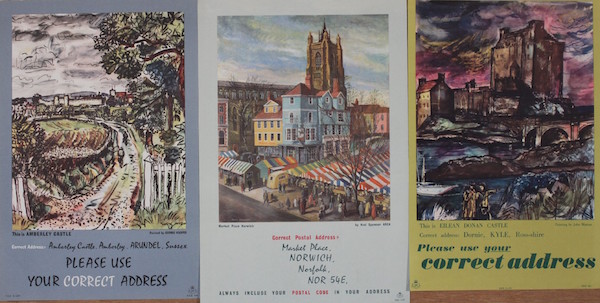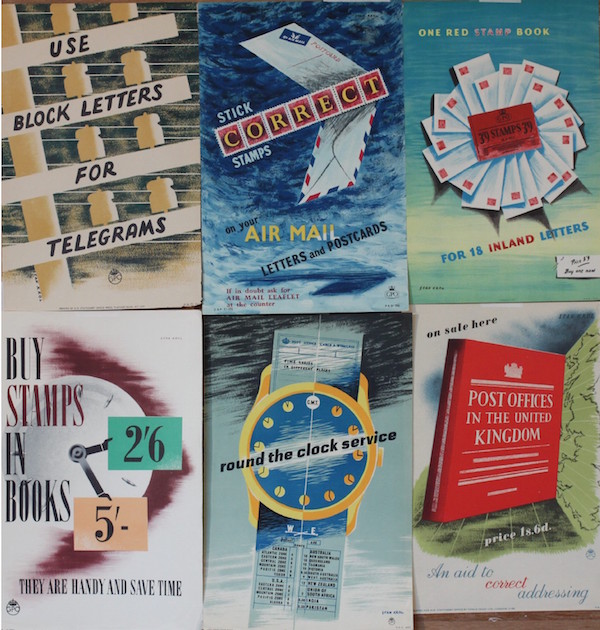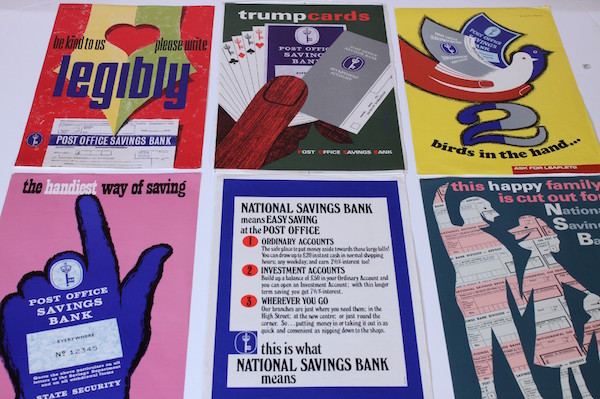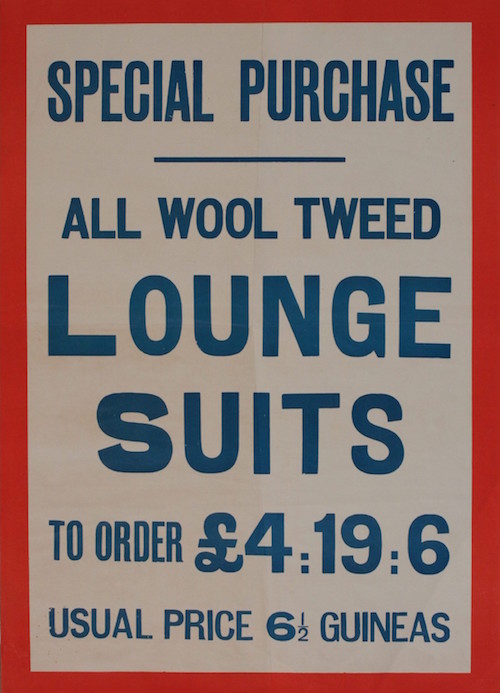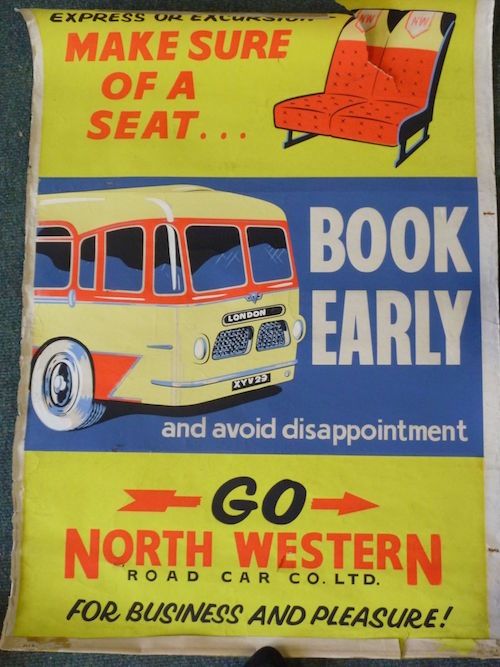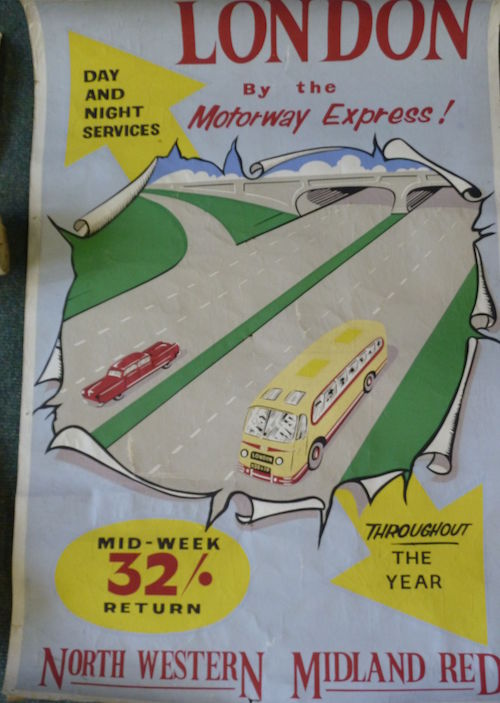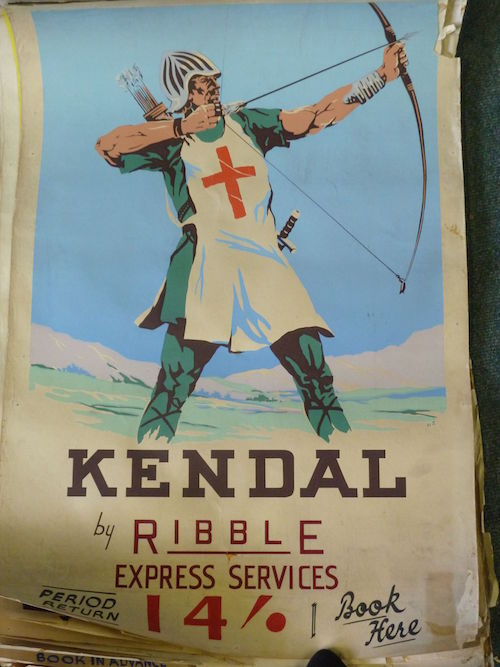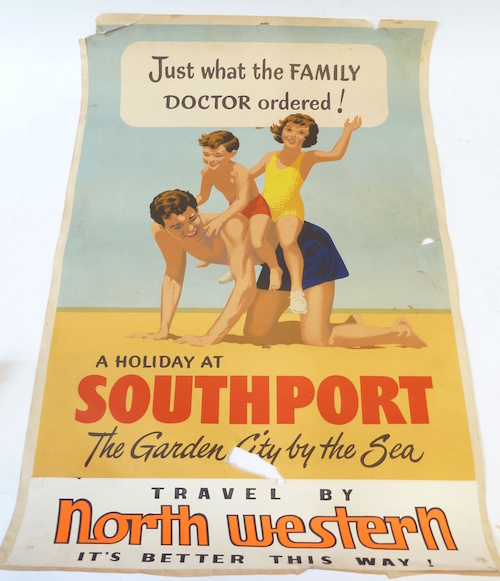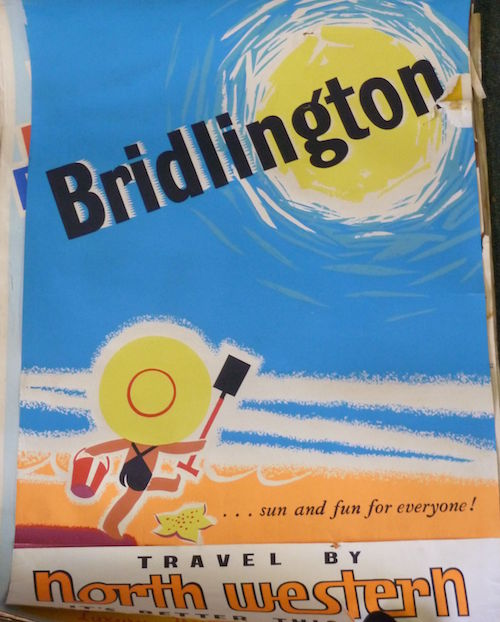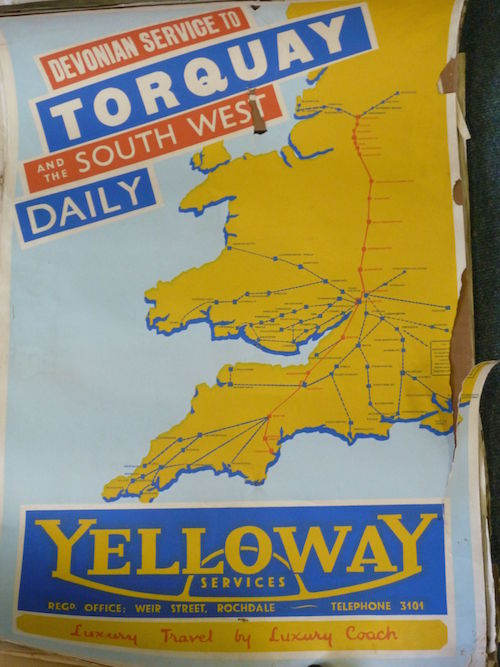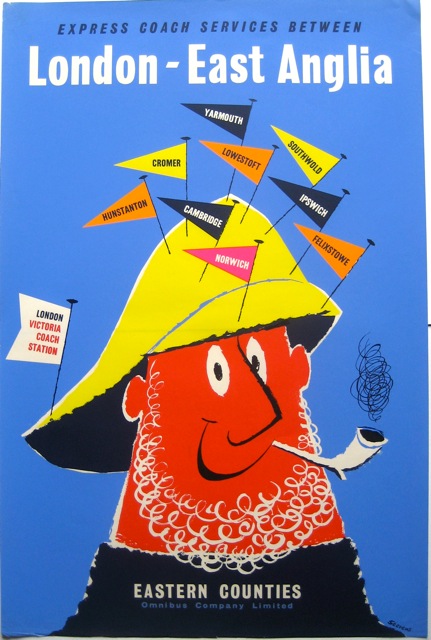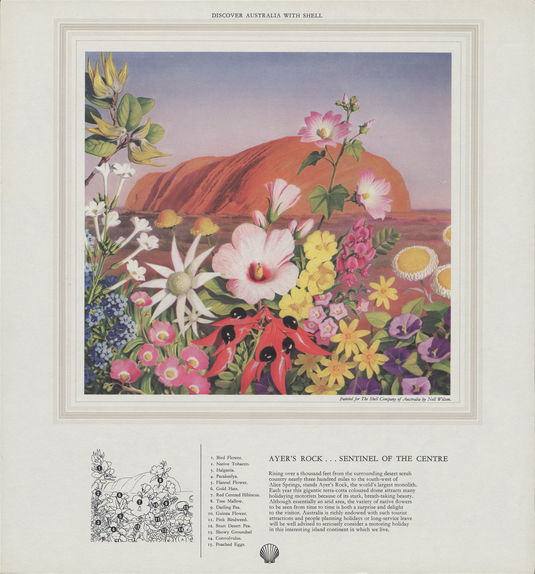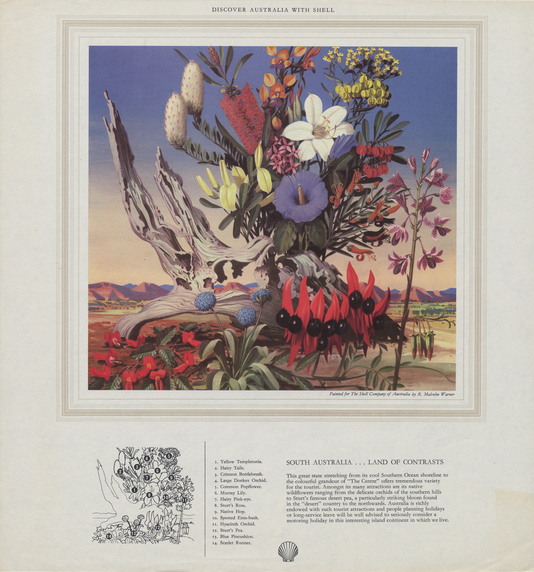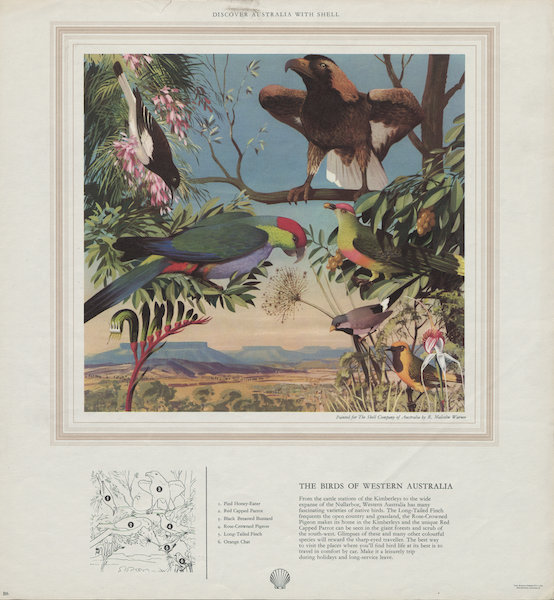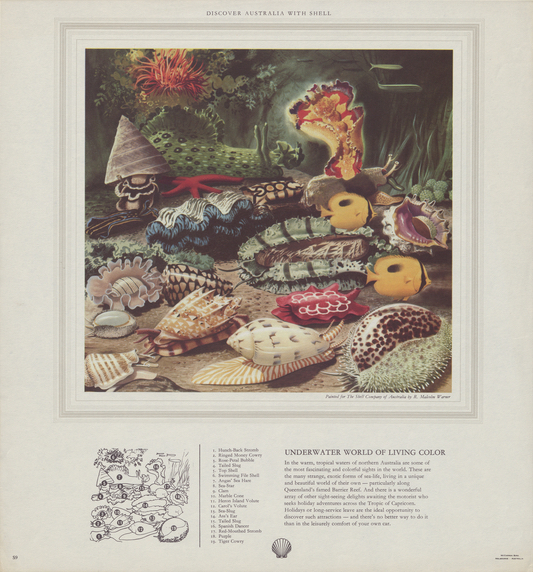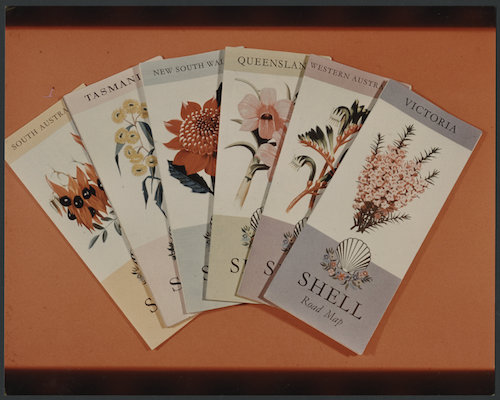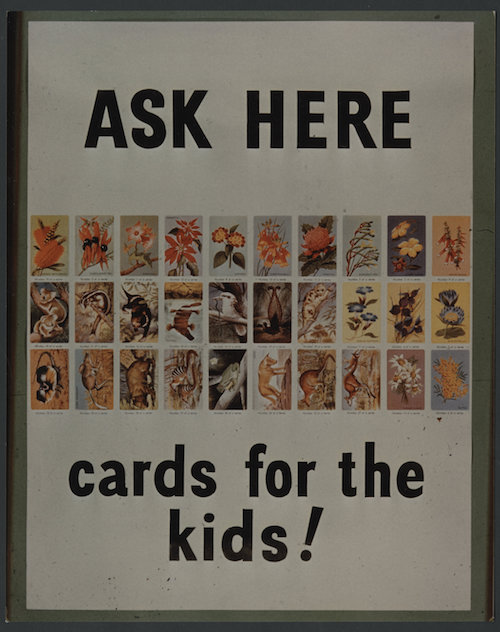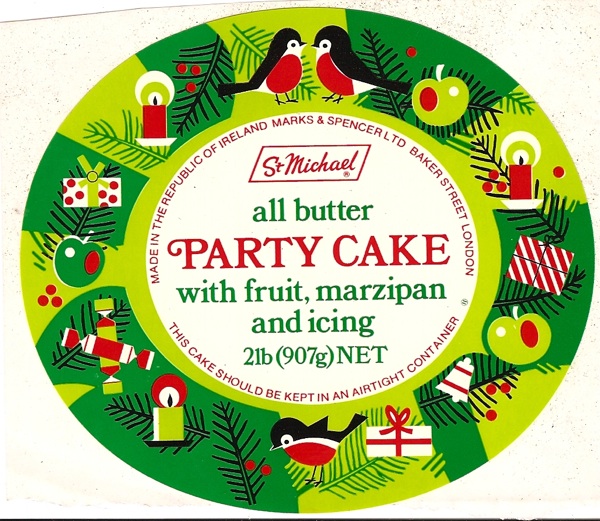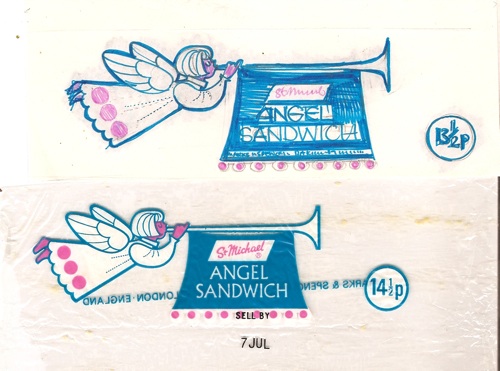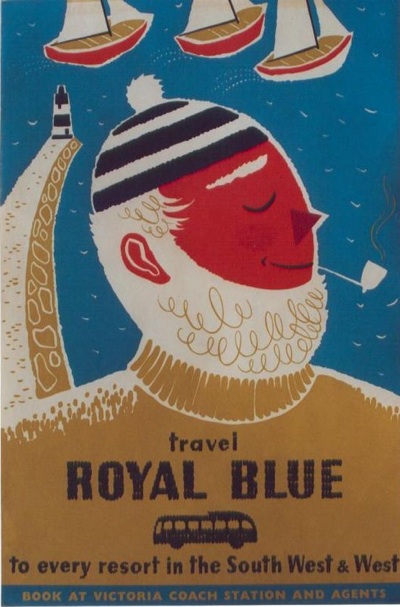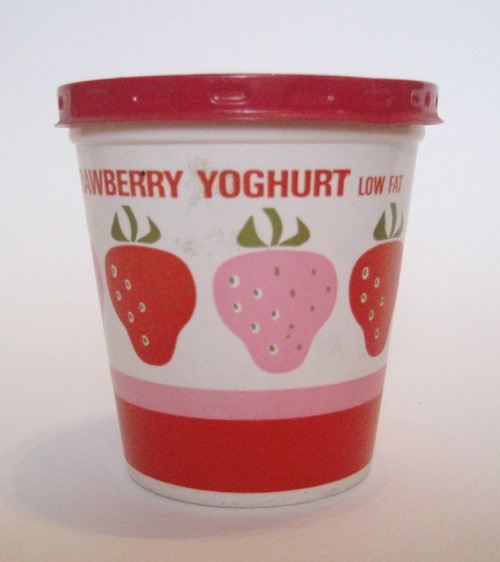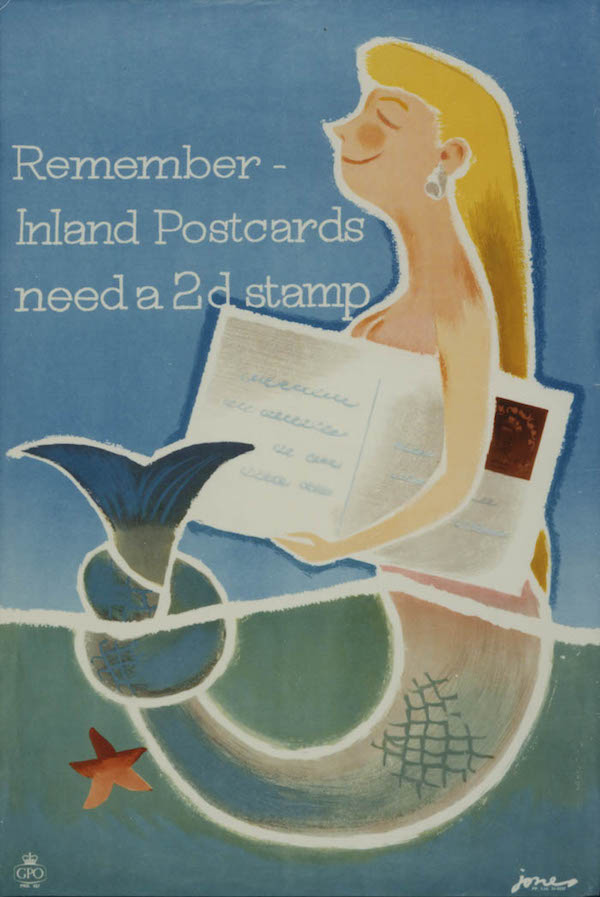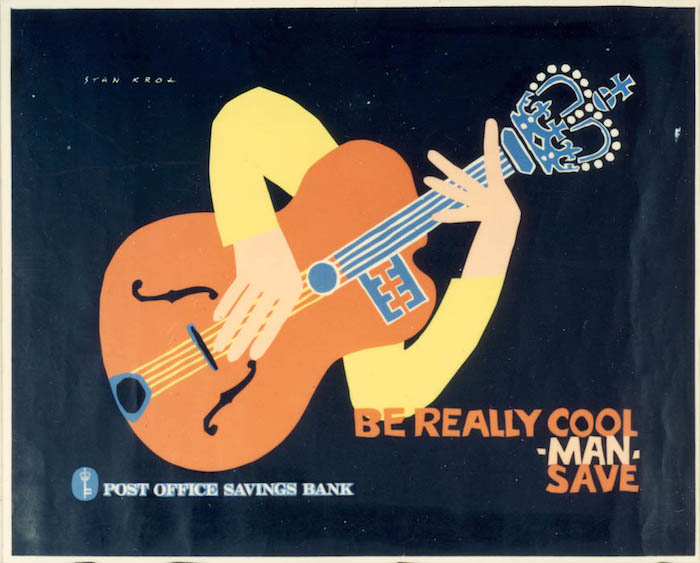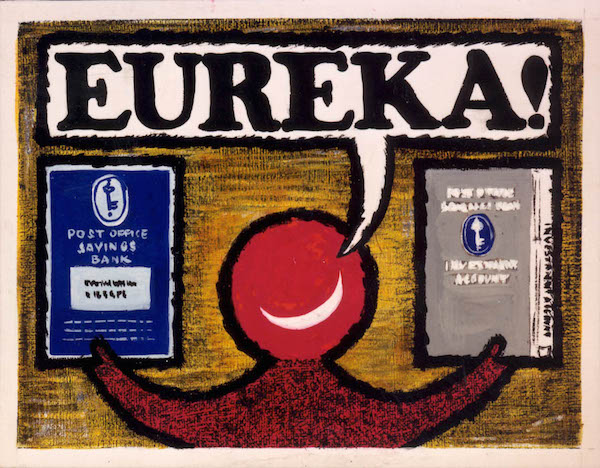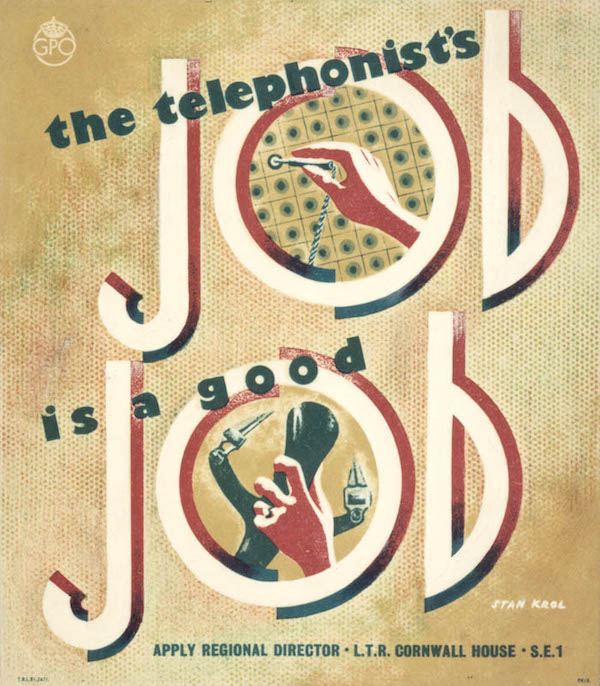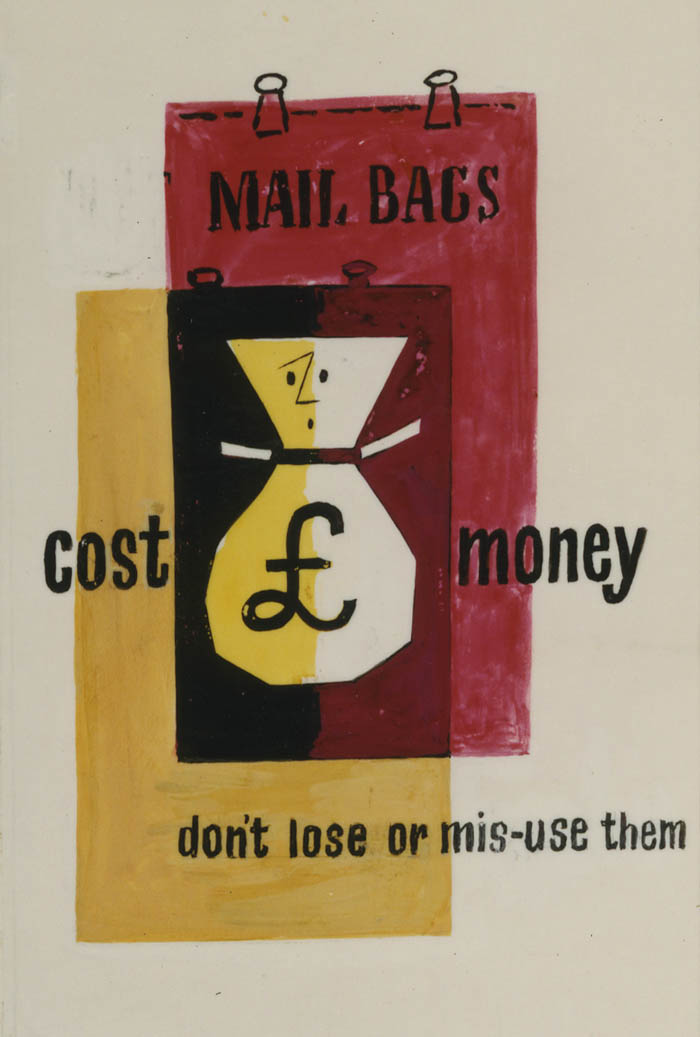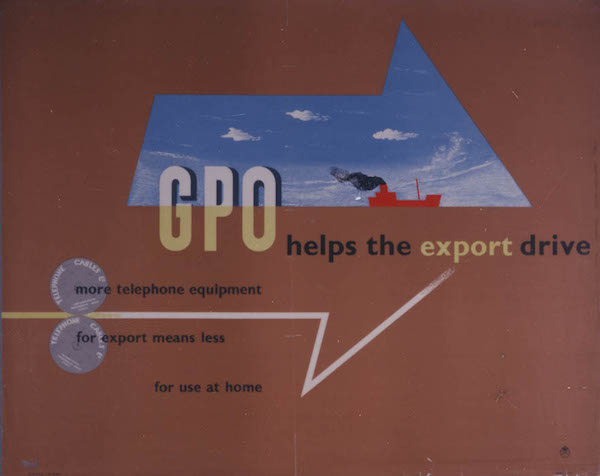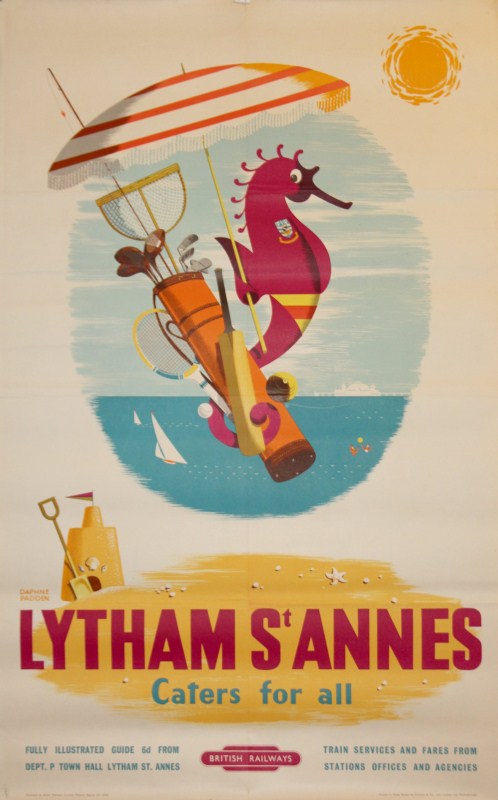Special purchase
My initial thought when I first looked at the new Onslow’s catalogue a few weeks ago was that someone had better ring the BPMA, because they’ve been burgled. Then I read the auction blurb more closely, and of course it says
including duplicates from the British Postal Museum & Archive
Collection
Panic over.
What they actually mean, it turns out, is duplicates from the BPMA collection, mostly featuring the work of Stan Krol. You can buy single posters like this.
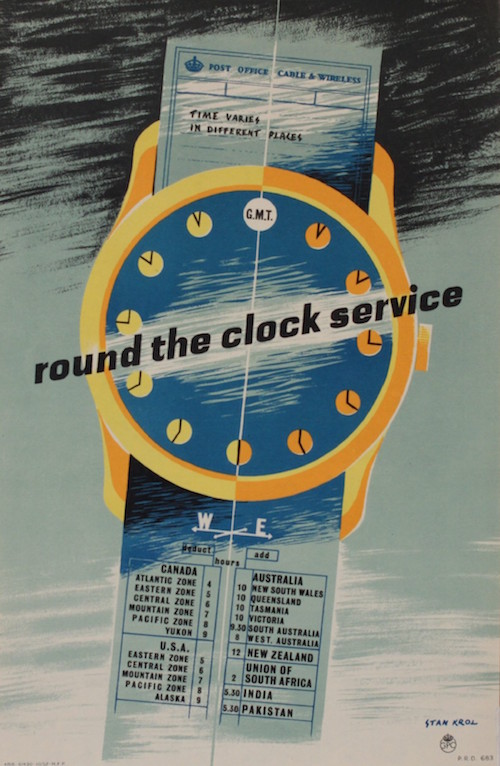
Stan Krol, 1952, est. £100-150
Or indeed this one, which I love for drawing my attention to a problem that I was hitherto utterly unaware of.
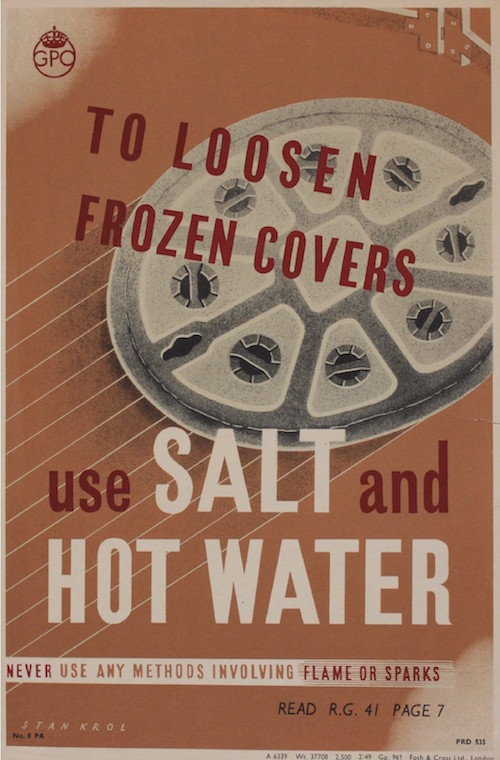
Stan Krol, 1949, est. £100-150.
Both of these come with a bonus set of small size Post Office ‘art’ posters as well.
They must have hundreds of them, but even so it’s a funny way of getting rid of John Mintons if you ask me. But no one did.
Anyway, back to the Krols. If you want more than just a single poster (and have no desire for a John Minton), you can buy job lots of six.
And this lot is repeated three times. Although there’s no escaping those art posters here either, you get a bonus Norwich Market Place (as shown above) whether you want it or not. I’m guessing people mostly don’t if they are having to give it away like this.
That’s not the end of it either, there’s also another job lot of Krols, this time for the Post Office Savings Bank, also available twice over.
No Norwich Market Place in sight here either, which is a bonus.
Now I have two thoughts about this. One is that it massively increases my knowledge of the work of Stan Krol, which can only be a good thing. While the GPO posters are all on the BPMA website, the majority of the Post Office Savings Bank ones haven’t been digitised yet so some are entirely new to me.
But the other is that this is no way to sell off an archive. Flooding the market with duplicates like this surely isn’t going to get the best value for the museum. The result is going to be something like the final Morphets sale, when people were so boggled by the sheer volume of stuff on offer than poster after poster went really cheaply. (Morphets have taken the online catalogue down from their server now, but I used to regularly go back and look at the fantastic posters that went for £40 or so and wish we’d bought everything). But that was an estate sale, after Malcolm Guest’s death, so they had no choice. Given that they had choices, I can’t help feeling that the BPMA aren’t handling this very well, and will not be getting the maximum value from their holdings. An instructive contrast is with the recent London Transport Museum sale, where there were no duplicates at all.*
This is particularly true of some of the more expensive posters in the sale, like these McKnight Kauffers.
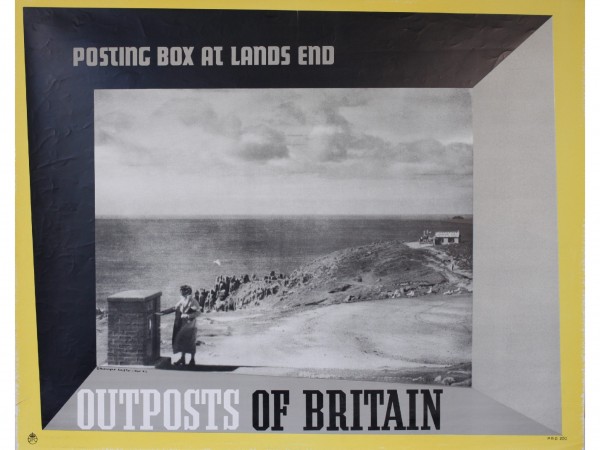
McKnight Kauffer, 1937, est. £500-700
The description says very firmly that these are the much rarer large format posters (they are a slightly odd 30″ x 36″). So then why sell them as individual posters, but then also as two pairs, and finally a set of four. They’re a lot less rarer as the result of that. Surely four would have been enough for one sale, with another batch next year, and so on.
But the sale isn’t entirely duplicates, there are also some single posters too, including a small handful of the van side posters that I love so much.

Andre Franion, 1960, est. £70-100
Guess what, you get a free John Minton with that too. But I’m still tempted, even though I have no idea how I, or anyone else, would display something that’s almost a metre long.
Other delights include this Alick Knight.
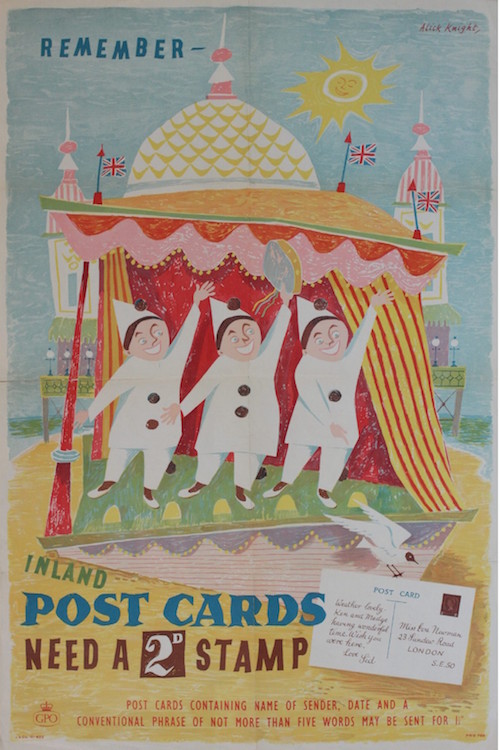
Alick Knight, 1955, est. £100-150
I’m also very pleased to see the estimate on this Zero too.
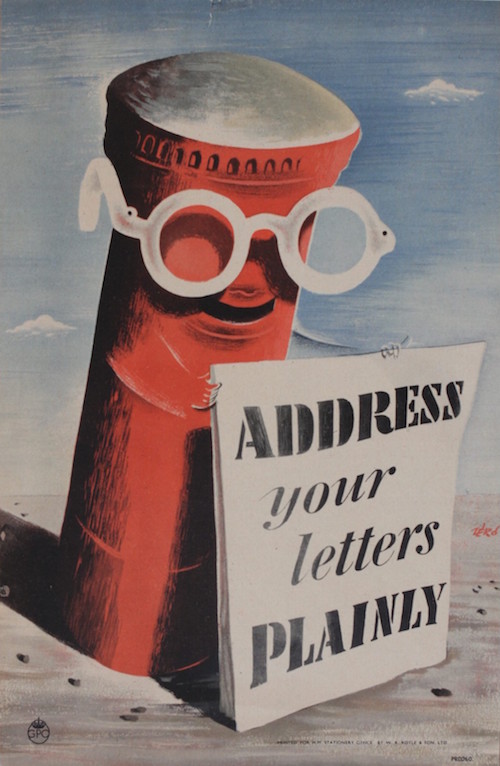
Hans Schleger (Zero), 1942, est. £400-600
This is because we’ve got one, and as a general rule anything I buy tends to lose rather than gain value so it’s nice to see something bucking the trend.
This is of course just a small selection of the GPO posters available, so it does pay to go and look at the catalogue yourself. In the meantime, this can stand as an example of the vast number of this type of poster that are on offer.
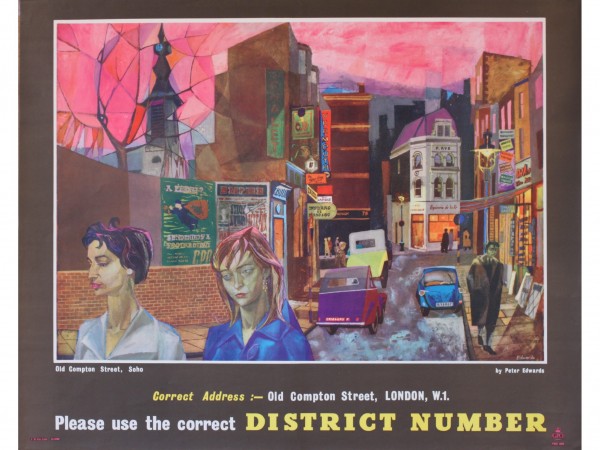
Peter Edwards, 1960, est. £70-100
There are also a whole range of other posters included as well, including the usual Shell educational posters.
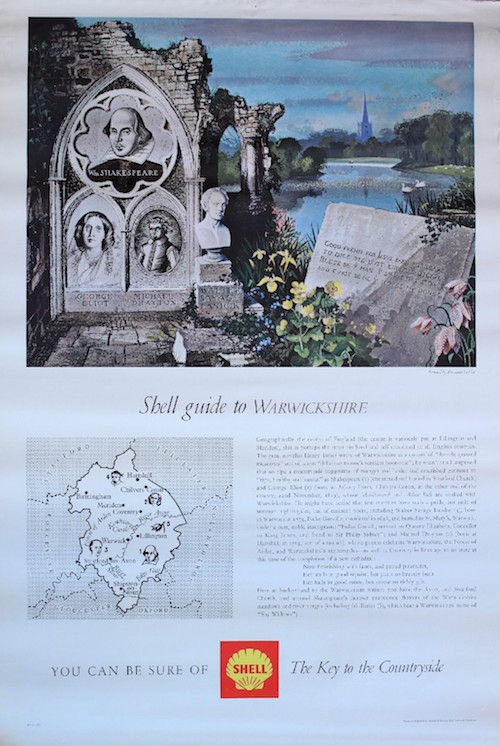
Rowland Hilder, 1963, est. £50-100 (with four others)
The 1914 centenary effect is also still holding strong, so there’s a set of World War One posters, including another Alfred Leete Lord Kitchener at a vast estimate.
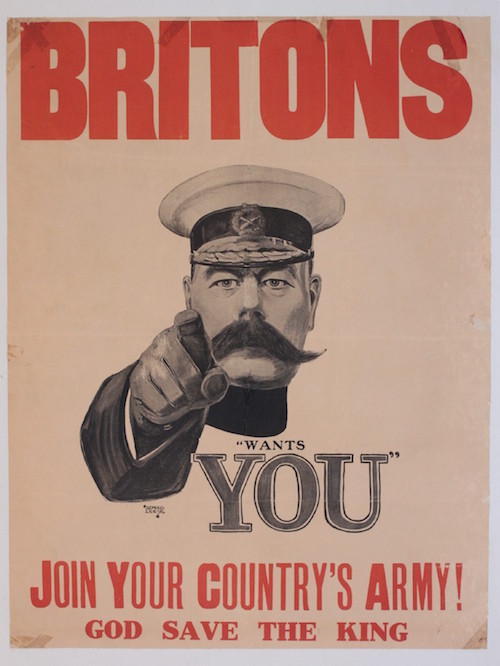
Alfred Leete, 1914, ezt. £1,000-1,500
This is turning into the Keep Calm of World War One, as the rarity and high auction values brings yet more examples out of the woodwork with every new auction.
Speaking of which, for a change there isn’t a Keep Calm and Carry On poster in this sale, although you can have one of either of the others from these series should you wish.
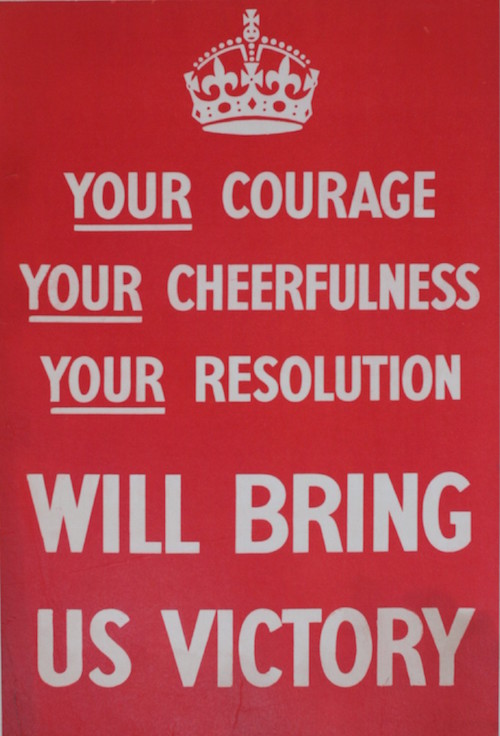
Anonymous, 1939, est. £300-400
Mostly, the WW2 offerings are more of historic than visual interest, the exception being a pair of Abram Games.
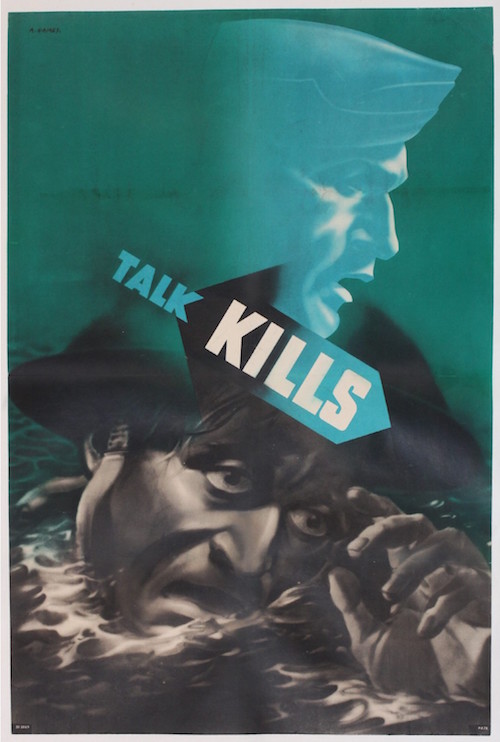
Abram Games, 1942, est. £400-500
What with all of this, it’s perhaps not surprising that there aren’t that many railways or London Transport posters this time round, although this circular Tom Eckersley is a delight.
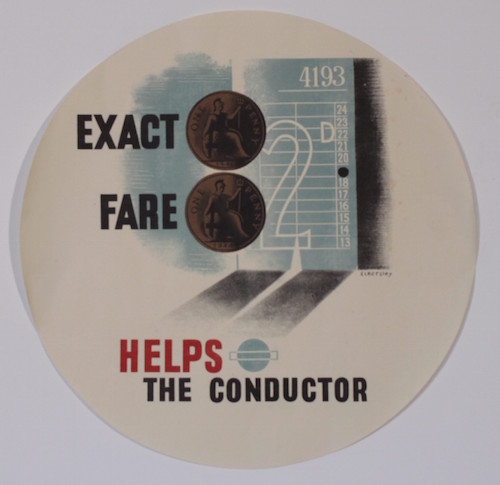
Tom Eckersley, 1945, est. £100-150
A number of the London Transport posters – although not the Eckersley – are listed has having come from another London Transport Museum Sale, run by Sotheby’s in 1993. I’d have loved to see how the values had changed between then and now, but sadly this date is just a bit too early for me to find the answers online. So if anyone does have a copy of the catalogue and can run the comparison, I’d be very grateful.
And finally, there is this.
A simple poster, doing its job. Can’t argue with that.
*Underneath all the debate about how to sell off museum archives lurks a bigger question, which is whether museums should be selling off their collections at all. Generally I tend to think no, because what people might discard as ‘worthless’ now could well turn out to be highly prized in later times, and also because museums have histories themselves, and these histories need to be recorded. And because then people won’t give stuff to museums if they think it might be sold in the future, and the reasons go on and on and on. But I do think posters are a slightly different case, precisely because they aren’t unique, and therefore it is possible to have too many. As long as the museum has enough to cover losses, and damage and loans, then I can’t really see a good reason why they should keep 12, or 20 Stan Krols, just because they have them. But I’d be interested in other people’s thoughts on this too.
